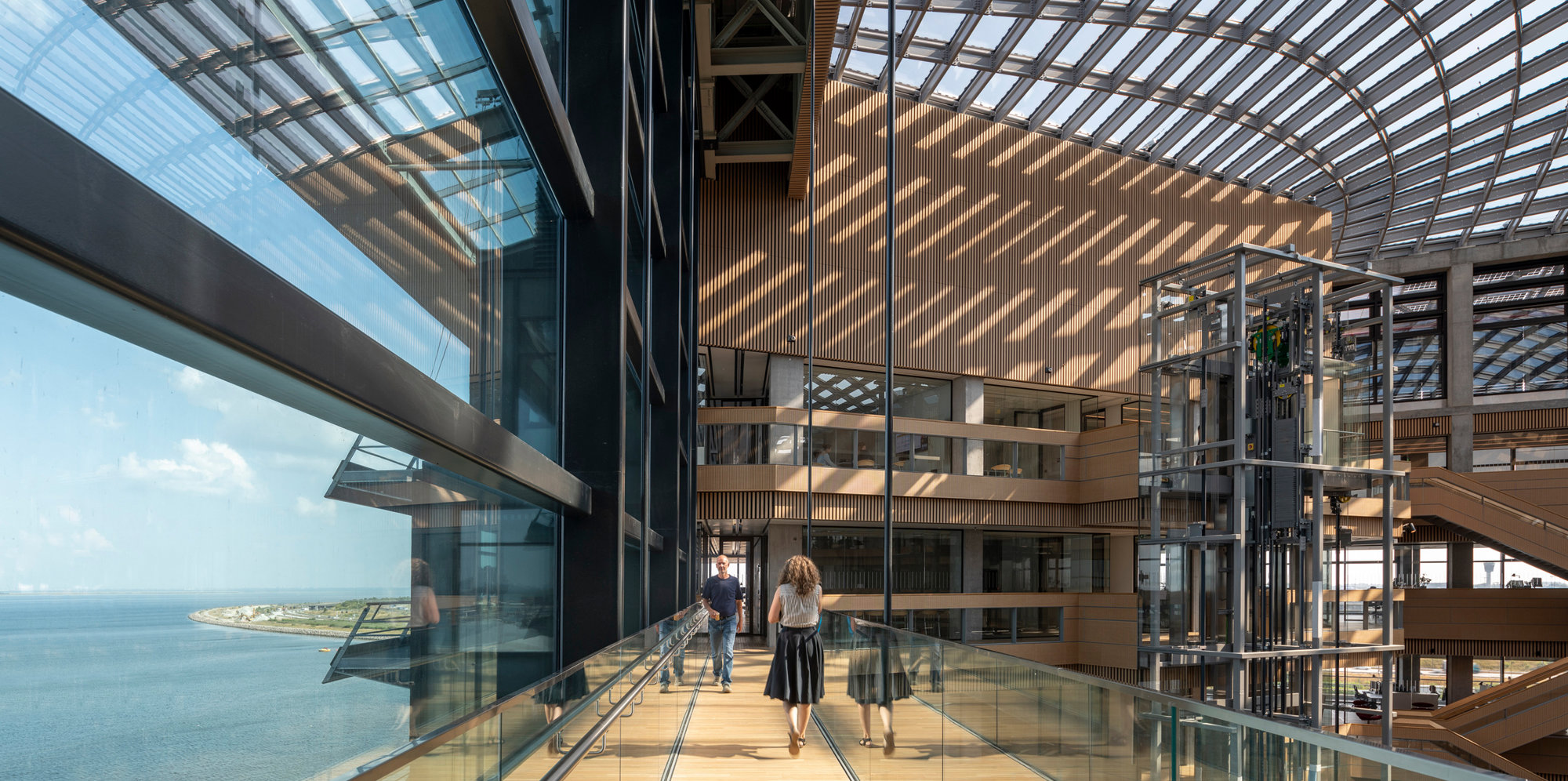In his essay ‘The Phenomenon of Place’, the Norwegian architectural theorist Christian Norberg-Schulz claims that architecture can bring hidden meanings in the landscape, or urban environment, out into the open: ‘The existential purpose of building (architecture) is to make a site become a place, that is, to uncover the meanings potentially present in the given environment.’
Grant Brooker, Head of Studio, Foster + Partners, reflects on the process of creating a new home for Ferring Pharmaceuticals on a waterfront site in Copenhagen. He describes the ways in which the client’s vison for the project, the unique site and the company’s heritage directly informed the design. He also suggests that the building draws out meaning from the landscape and embodies the company’s innovative spirit.
“From the selection of the extraordinary site to the high aspirations for the building and the role it could play, this project was driven by the vision of our client, Frederik Paulsen. It was an honour to be trusted to design and deliver that vision, creating a new home for the people who are at the heart of this pioneering company.
During early visits to Copenhagen, it quickly became clear that the site has symbolic meaning for Ferring, due to its strong visual and physical connections with Malmo - where the company was founded in 1950. Over the course of the project, we worked hard to emphasise the site's unique character and express its significance to the company through the building's design.
We positioned workspaces around the edges of the building and designed a central square, with a full height glazed wall, open to the water and the views of the Swedish coastline. The triangular form of the building was driven by the site, which is surrounded on three sides by water. We deliberately pulled and exaggerated that form by stepping and cantilevering the floors to lean out over the water.
We felt that Ferring's research-driven approach should be reflected in the building's design. Working closely with their team, we gained valuable insight into the processes involved in the research and development work they do, which enabled us to create workspaces that are tailored to the company's specific requirements.
This project was made possible thanks to the unwavering support from the client team, the local authorities, and our collaborating designers, particularly our colleagues at Mikkelsen Architects. We hope we have created a place for innovation, which embodies Ferring's collaborative ethos and enhances a sense of belonging for their people.”









